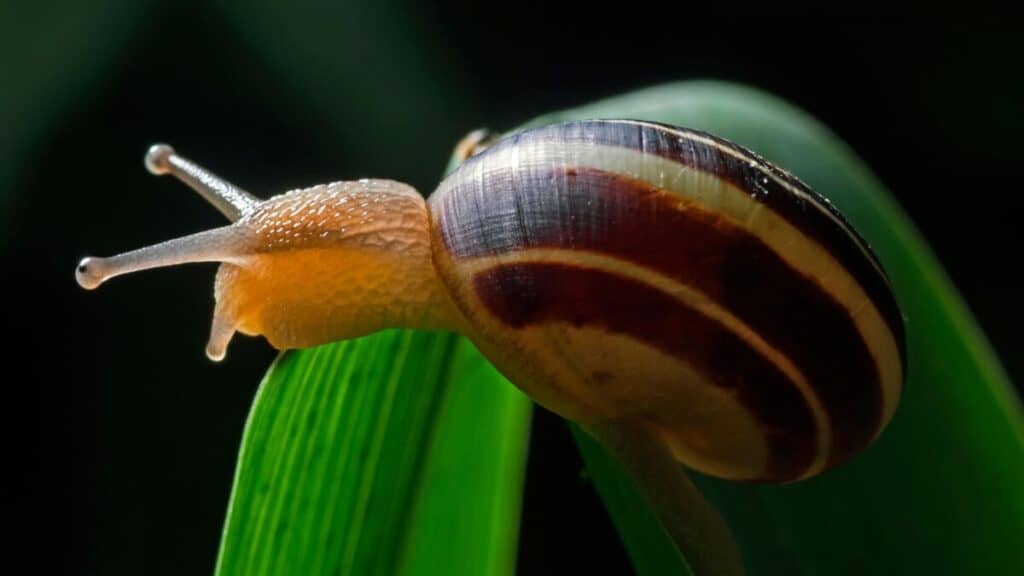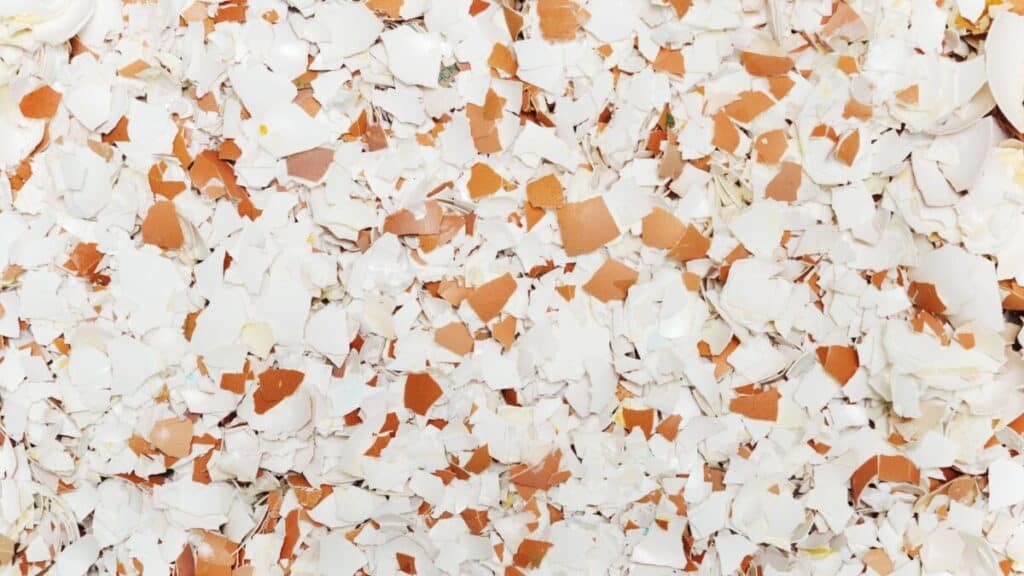
If you happen to have kids and a garden, you have probably observed their wonder over every found lizard, caterpillar, and snail.
Kids love snails because they are small, don’t move quickly and at random, and are very simple to take care of.
You can keep garden snails and so long as you provide for their needs, they’re very simple to take care of. They’re quiet, inquisitive-looking creatures that move from point A to point B in the slowest manner possible. Plus, they’re a unique pet to have around.
Snails are pretty easy to find, especially in your garden. The thing is it’s good to get them out of the garden because they can be very destructive. What better way to take care of your garden while setting up a habitat for your own collection of snails?
What Kind of Snails Are Found in Gardens?
For the most part, garden snails are the snails most often found in gardens. Imagine that. It’s also known as the Common Garden Snail.

Banded snails are probably right behind common garden snails in terms of commonplace snails found in gardens.
Banded snails will go to work on your plants but they are nowhere near as destructive as common garden snails. The banded snail is a little smaller but both snails will easily sit on the pad of your index finger.
Banded snails come in a variety of colors, with the typical swirling shell pattern only with brighter color variations with the added band.
There are several species of banded snail but you probably couldn’t tell the difference between them without having a distinct knowledge base in snail morphology.

Though banded snails are less common than garden snails, they are prettier to look at and a favorite for snail habitats.
The common garden snail, however, is another matter entirely. Slightly larger than their banded snail cousins, they are highly destructive.
Whether you want to keep a common garden snail or not, you definitely need to remove them from your garden.
They’ll systematically make their way from plant to plant, gorging on the greenery, which will deprive your garden plants of their ability to use photosynthesis.
Why Keep Garden Snails as Pets?
Most adults probably won’t bother but they make excellent pets for kids and they’re the perfect learning tool for teaching your kids responsibility, especially when it comes to taking care of something that depends on them for survival.
They’re not high maintenance so it won’t be too much for young children. Since they are slow and methodical in their movements, children can handle them much easier. However, that doesn’t mean they are only for kids.

If you own an empty terrarium, you can certainly populate it with snails if you choose to do so. Both common garden snails and banded snails will get along just fine and you won’t have to worry about either one of them fighting over territory, so long as they have plenty to eat. There are a lot of good reasons for keeping snails as pets.
- They generally get along with each other pretty well
- Easy for children to handle
- Teaches young children how to be responsible for and take care of a pet
- They aren’t high maintenance
- You don’t have to spend a fortune feeding them
- Habitat setups are simple and easy to maintain
- They’re very interesting to watch
- They don’t make any noise
- They like leftovers
If you decide to keep one or more snails, you shouldn’t limit their environment to something tiny. Inexpensive and easy to handle are not the same things as not providing for their general welfare and happiness.
What is the Best Snail Habitat?
Pet snail homes don’t have to be elaborate but they should have plenty of room to move around. A ten-gallon, plastic terrarium is more than enough to make a few snails happy.
You can even get away with using a small Tupperware container or a much larger one if you want a lot of snails or your collection is growing.
You do need to find a way to enclose it. With a terrarium, you typically have a plastic lid with a hatch. With Tupperware, a simple snap-on lid is fine but it needs cutouts to provide oxygen and just fresh air in general.
A snail is more than capable of moving across a lid upside down so it can escape if it’s not closed at night.

You might think a snail is slow and, for the most part, they are. But they are deceptively fast as well. You can go to bed for the night and wake up the next morning to an escaped snail, with no idea where it’s in the house.
What is the Best Substrate for Snails?
The very soil they are used to in your garden is a good choice. A lot of snail pet owners like to use Sphagnum moss because snails just seem to really love the stuff. The only thing you need to do with the soil is keep it moist.

You don’t have to dump water in there from a pitcher but you should fill a spray bottle up with water and give it a good spray every now and then. The most you need to do is reach in there occasionally and touch the soil to see if it’s moist or dry.
Organic Coconut Coir Peat Mix is another good option and you can purchase some for very reasonable prices. If you are using a ten-gallon terrarium, you won’t need too much. Even better if you are using a small terrarium for geckos or other small pets.
Loam is often used as a snail substrate as well. Garden snails and banded snails are used to sandy or dirt surfaces so they won’t have any problems moving around on loam. Plus, it’s generally cleaner and easier to handle than potting soil.

Here are some other options you can consider as well:
- Humus
- Loam/humus combination
- Peat soil
- Potting soil
- Coir
- Sphagnum Moss
Be sure to avoid the following substrates as well:
- Reusable or recycled substrates
- Salty soils
- Acidic soils
- Compacted soils
- Sandy soils
A snail needs to be able to dig and if it can’t dig, it can’t lay eggs. Sandy soils are often too much and they don’t hold water very well, so it’s difficult to keep them moist.
For obvious reasons, you don’t want to use soils that are very acidic or salty, as they will dry the snail out and dehydrate it to the point of death.
Using recycled substrates is dangerous as well, because some of the diseases or bacteria in the old soil may be problematic for the snail.
What to Feed Your Garden or Banded Snails?

When you start pulling snails out of your garden, you’re removing them from their source of food. Since they are in your garden, it’s not a huge leap to assume they like fruits and vegetables. Just avoid any citrus foods.
Things like cucumbers, zucchini, squash, kiwi, and sliced carrots. In fact, you should slice all of them up and add them to the snail’s terrarium in a small, easily accessible dish that the snail won’t have any problems reaching.
Snails do require calcium from time to time but the solution to that is pretty easy. Every time you cook with eggs, save some of the eggshells and sprinkle the crushed shell over the food. If you have a garden, odds are good you have a composter.
Just save a few of the crushed or powderized eggs by setting them aside for the snails and the rest can go in your composter.
Furnishing Your Snail’s Habitat

Snails really enjoy stretching out and relaxing in dark, cool environments. It wouldn’t hurt to get them a couple of caves that would typically go in an aquarium. As long as they can go deep enough to escape the light for a little while.
Smooth river stones or pond rocks, along with twigs laid diagonally across the habitat are all perfect additions.
Just be sure not to grab sticks from your backyard. You never know what’s going on inside of those sticks, in terms of insects and other bacteria from your backyard.
You can also add real plants and they will continue to grow if you are using potting soil as a substrate. The snail may end up eating most of the plant but that’s okay. Just make it an easily replaceable plant.
Is it Safe to Handle Snails?
It’s just like handling anything else you find in your backyard. If you pick up a frog, lizard, turtle, or other common amphibians and reptiles in your backyard, you usually wash your hands. This is no different.

It’s especially important to get your kids to wash their hands after handling snails. Kids love to touch whatever they’re curious about before jamming their hands and fingers in their mouths, eyes, or noses.
That’s just the way kids are so they should wash their hands each time they play with the snails, and so should you.
Snail Behavior
Snails never bite or resist you when you pick them up. However, you can damage them if you squeeze too hard or are overly enthusiastic when you pick one up. The best way to pick up a snail is to allow it to slide onto your finger.

If you pick it up by the shell, it’s easy to forget that its probably suctioned to whatever surface it’s currently on, which will pull the snail loose from its shell inside and could kill it. Snails generally behave well with one another, especially if resources are plentiful and varied.
While watching a snail fight another snail would be an exercise in restraining yourself from falling asleep, it’s not likely to happen in a terrarium.
Unlike Betta fish or other aquarium and terrarium fish, reptiles, and amphibians, snails are really easy to get along with and they do pretty well with each other.
It’s probably not a good idea to add any other creatures in there with them as that could be potentially fatal, depending on what you put in there. Maintain the practice of keeping the snails isolated from any other creatures and they will be just fine.
Bottom Line
Snails are perfectly fine to keep as pets. You really get the best of both worlds when you find them in your garden.
Not only will you remove something that could endanger your fruit, vegetable, or flower garden, but you can also keep it as a pet. The fact that it’s a very low maintenance pet is even better.
Alright, that’s it for this article, here are a few hand-selected articles that you might also find interesting reads:
Can You Keep Wild Praying Mantis as Pets?Can you keep wasps as pets? Yes, Here’s How
Can You Keep Ladybugs As Pets?
Recent Posts
Tiny Black Bugs in Bathroom NO WINGS: What They Are and What to Do!
Finding tiny black bugs in your bathroom can be uncomfortable, to say the least. Especially if they are persistent, or they appear in very large numbers, which they often like to do. When it...
Tiny Black Bugs in Plant Soil - What Are They & What To Do About It
A short horror story: You get a new houseplant. You do your best to take care of it. You’ve ensured that it has the right soil, the right amount of sun, it gets enough water. And then one day, you...

